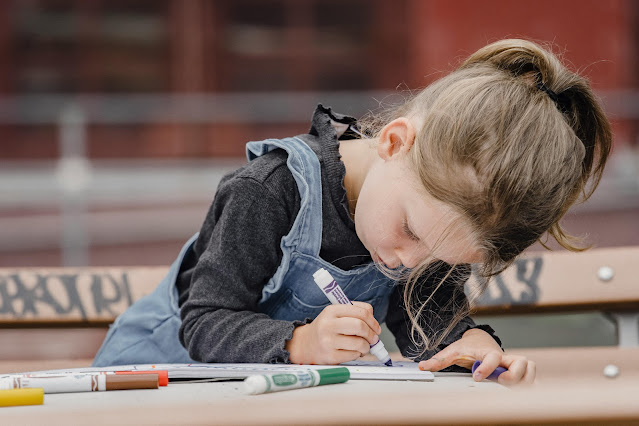In the bustling landscape of modern education, one question stands out with profound implications: Can children genuinely absorb the essence of art within the confines of an art school? This inquiry doesn't just scratch the surface; it delves deep into the core of academic practice, challenging the very foundations upon which we nurture creativity in our youth.
As I ponder this, I'm compelled to critically examine how art instruction shapes tomorrow's creative minds. As I think over this question, I’m reminded of the vibrant and dynamic nature of childhood creativity. Children possess an unparalleled ability to perceive the world with fresh eyes, to explore without inhibition, and to express themselves in ways that often dare conventional norms. Yet, amidst the structured confines of an art classroom, does this creativity risk being stifled?
TD TD
One of the primary concerns surrounding art instruction
is the fear that it imposes limitations on a child’s creative freedom. Are we,
in essence, imposing a set of rules and techniques that may hinder rather than
foster artistic expression? It’s a valid concern, one that warrants careful
consideration.
However, upon closer examination, it becomes evident that art instruction can serve as a valuable catalyst for nurturing creativity in children. Rather than stifling their innate abilities, a well-designed art curriculum can provide them with the tools and techniques necessary to explore and expand their artistic horizons.
Consider, for instance, the role of experimentation in the creative process. While children may naturally gravitate towards certain artistic mediums or styles, exposure to a variety of techniques in an art classroom can broaden their perspective and encourage them to step outside their comfort zones. Through trial and error, they learn to embrace the conceptof artistic exploration, understanding that there are no right or wrong answers in the realm of creativity.
Moreover, art instruction can help children developessential skills such as observation, problem-solving, and critical thinking.
Whether it’s learning to accurately depict proportions in a figure drawing or
experimenting with color theory in a painting, each artistic endeavor presents
its own set of challenges to be overcome. In doing so, children learn to
approach problems from multiple angles, to think creatively, and to persevere
in the face of adversity.
For insights
on how parents and teachers can further nurture children's creativity through
their responses to artwork, explore our blog post on How Should Parents and
Teachers Respond to a Child's Artwork? Nurturing Creativity
TD TD
But perhaps the most profound impact of art instruction
lies in its ability to instill a sense of confidence and self-expression in
children. For many young artists, the act of creating art serves as a powerful
form of communication, allowing them to express thoughts, emotions, and
experiences that may otherwise go unspoken. Through the guidance and support of
skilled instructors, children learn to trust in their own artistic instincts,
gaining the confidence to boldly share their unique perspectives with the
world.
Of course, we must recognize the possible downsides of overly rigid art education. As educators, it’s essential to strike a delicate balance between providing guidance and allowing for creative autonomy. Instead of enforcing strict standards or suppressing individuality, a successful art curriculum should empower children to explore and express themselves in ways that feel authentic to them.
So, can children truly be taught art in art school? The
answer, it seems, lies not in dictating the “right” way to create art, but
rather in providing them with the tools, guidance, and encouragement they need
to unleash their creative potential. By fostering a supportive environment that
values experimentation, exploration, and self-expression, art instruction can
serve as a powerful force for nurturing creativity in children and shaping the
artists of tomorrow.
TDTD
TD TD


Comments
Post a Comment